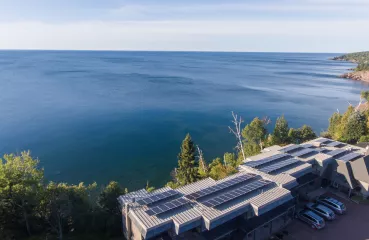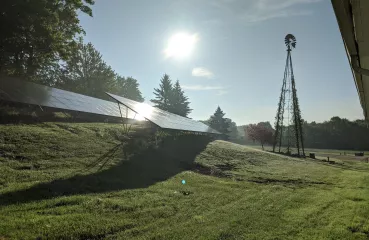For the past three years, family-owned Virnig Manufacturing in Rice, Minnesota has been home to a 500 kW solar array.
The skid-steer attachment manufacturer started considering solar in 2015, when they were approached by a local installation company about the benefits of adding solar to their 70,000 square foot facility. Over the next couple of years, they learned more about solar and explored the potential costs and benefits of an installation on their facility.
According to Bryan Virnig, who spearheaded the project, “prices of panels had continued to drop, so it started making more and more sense.”





